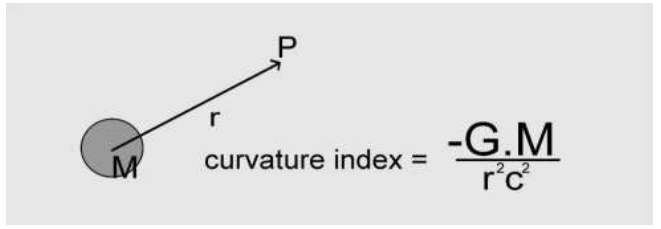Original Article
, Volume: 11( 4) DOI: 10.37532/2320-6756.2023.11 (4).340A simple formula that allows to calculate the curvature of the trajectory in the Minkowsky space-time of a point located at a fixed distance from a point mass
- *Correspondence:
- Fernando Salmon Iza
Bachelors in Physics from the Complutense University of Madrid UCM, Spain
E-mail: fernandosalmoniza@gmail.com
Received date: 11-April-2023, Manuscript No. tspa-23-94565; Editor assigned: 12-April-2023, Pre-QC No. tspa-23-94565 (PQ); Reviewed: 22- April-2023, QC No. tspa-23-94565 (Q); Revised: 25-April-2023, Manuscript No. tspa-23-94565 (R); Published: 28-April-2023, DOI. 10.37532/2320-6756.2023.11 (4).340
Citation: Salmon F. A Simple Formula that allows to Calculate the Curvature of the Trajectory in the Minkowsky Space-Time of a Point Located at a Fixed Distance from a Point Mass. J. Phys. Astron.2023;11(4):340.
Abstract
A formula that allows calculating the curvature of the trajectory in the Minkowski space-time (scalar curvature) of a point in the case of a gravitational field caused by a point mass, through the values of mass and spatial distance.
Keywords
Cosmology; General relativity; Curvature of space-time
Introduction
Starting from a point mass "M" we study the curvature of the trajectory in the Minkowski space-time (scalar curvature) of a point away from the mass “M” a distance "r".
Training the Formula
According to rational mechanics, the centrifugal acceleration to which a mobile is subjected that travels around a curve at a speed "v" in a trajectory with a radius of gyration R, is given by:

According to the general theory of relativity, the gravitational field is created due to our motion in curved space-time, just like centrifugal force when we are traveling in a car around a curve. If, as we know, space-time moves at a speed of module "c", an observer who is at rest near a mass will be subjected to a gravitational field created by that mass "M", a field that curves space-time, and will experience, due to the speed "c" of space-time and the curvature of space-time, a centrifugal acceleration "a" given by:

where R is the radius of curvature of the path of that point in space-time. The force to which it is subjected is given by

This force to which it is subjected is experienced as a gravitational force and according to Newton's theory of gravitation it is also expressed as

where G is the universal gravitational constant.
Equating the two expressions (1), (2) we obtain:

1/R turns out to be the index of the scalar curvature (curvature of the Minkowski space-time trajectory) from a fixed point at a distance "r" from a point mass M.
A formula that allows us to calculate the scalar curvature of the trajectory in space-time of a point, at a spatial distance "r" from a point mass "M", based on parameters that are easy to determine, such as mass and spatial distance. FIG. 1
Figure 1: Index of the scalar curvature of the trajectory of the point P in the space-time as the function of the values of the mass m and the spatial distance r.
A Calculation with Imagination
We are going to calculate the curvature of space-time at the radius of the observable universe and with a mass equal to the total mass of the universe. Let's see the result:
Radius of the observable universe 4.40 × 1026 m [1].
Mass of the universe 9.27 × 1052 kg
G constant of universal gravitation 6.67 × 10-11 Nm2 / Kg2

Value close in order of magnitude to that of the vacuum energy density 0.6 × 10-26 Kg / m3 [2].
Conclusions
For an assumption of a point mass, a simple formula has been obtained that allows calculating the index of the scalar curvature (curvature of trajectory in the Minkowski space-time) of the point (t, r), where r is the spatial distance to the mass "M" that is causing that curvature, depending on that distance and the value of that mass.
References
- Espanol WH. Org. pluricelular,
- Prat J, Hogan C, Chang C, et al. Vacuum energy density measured from cosmological data. J. Cosmol. Astropart. Phys. 2022(06):015. [Google Scholar]
[Crossref]


